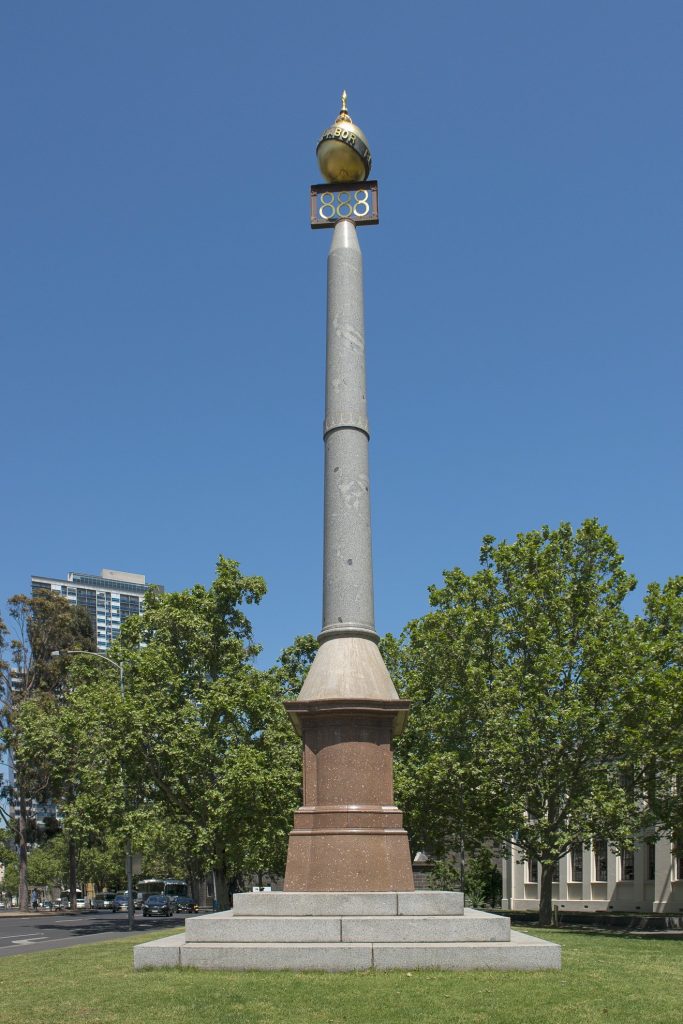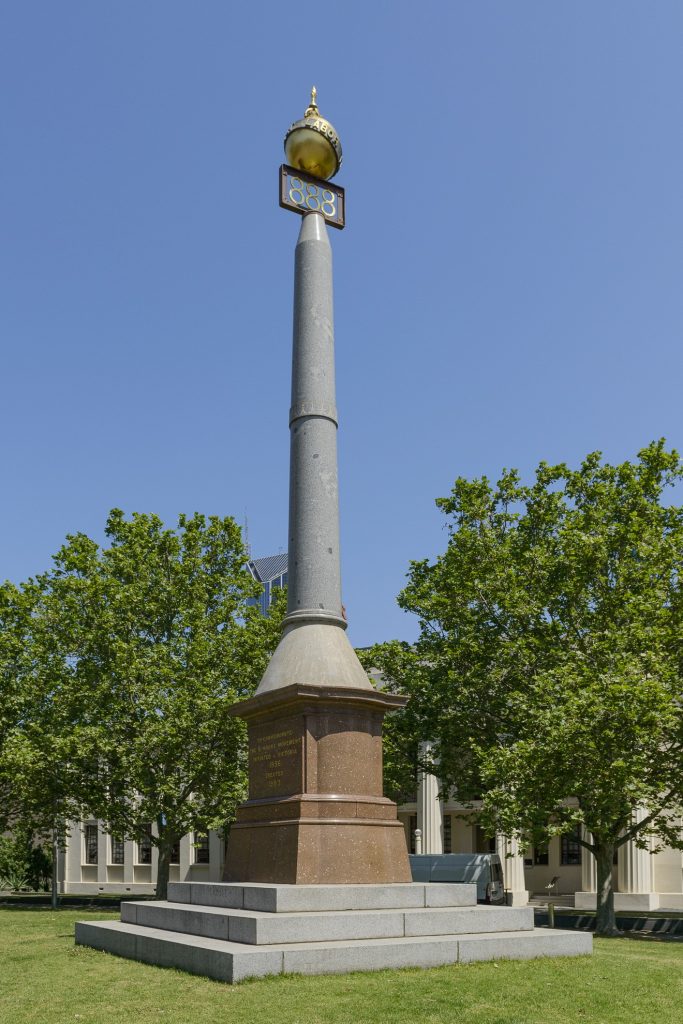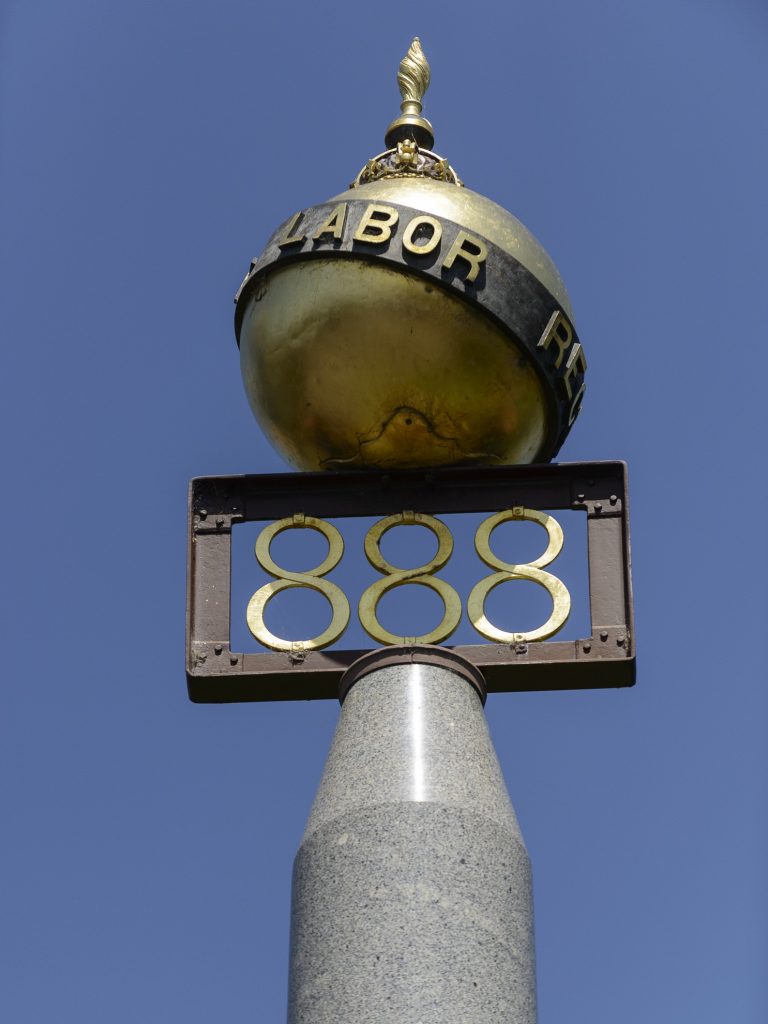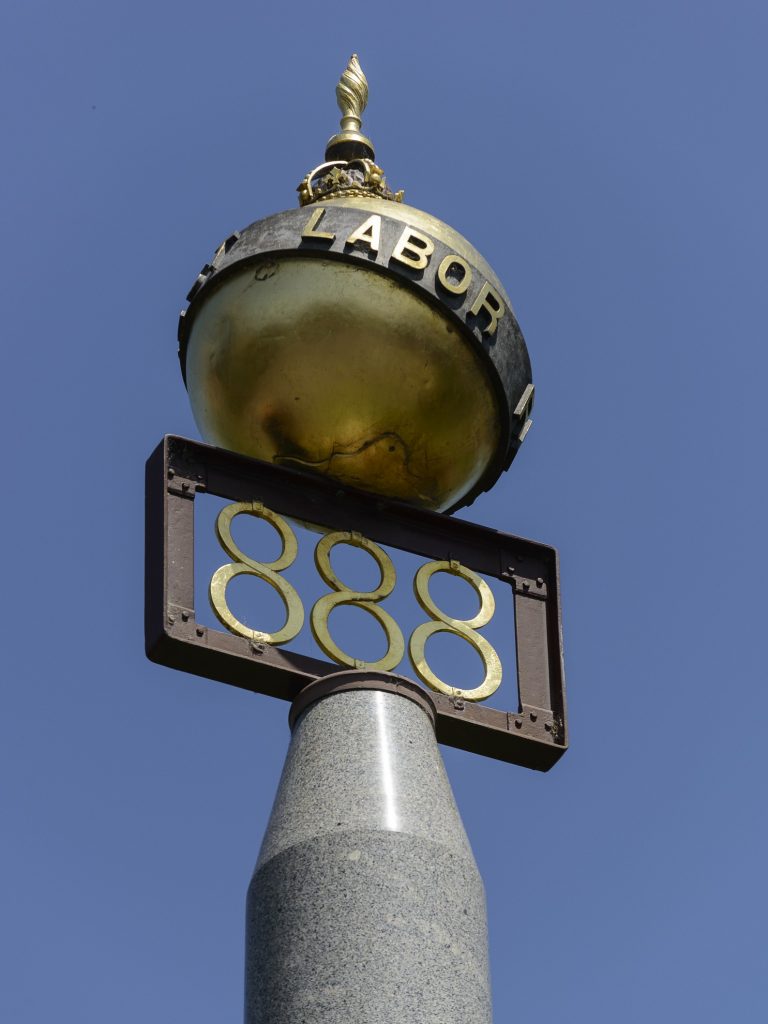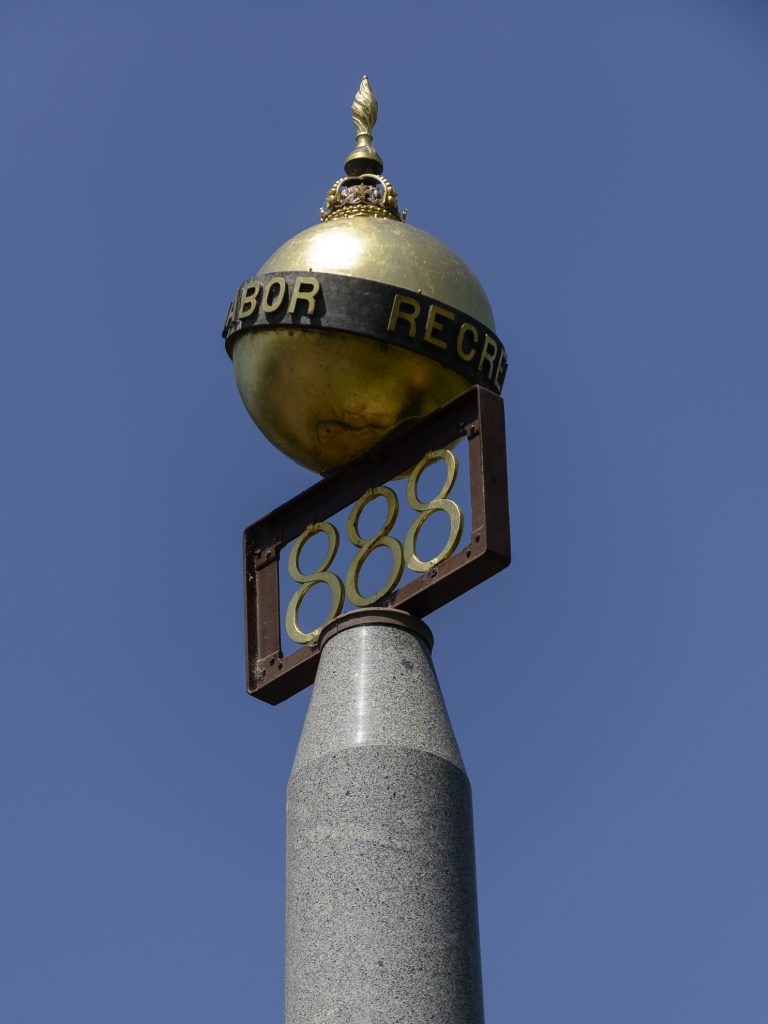Eight Hour Day Memorial 1900-03
BALL, Percival
Registration number
1086510
Artist/maker
BALL, Percival
Title
Eight Hour Day Memorial
Production date
1900-03
Medium
granite, bronze, gold-leaf, stone
Dimensions (H x W x D)
1185 cm (height). 480 x 460 cm (base)
Inscriptions
On Pedestal: "To commemorate the 8 hour movement initiated in Victoria 1856, erected 1903"
Round globe: "Labour, Recreation, Rest"
Credit line
Publicly funded, 1903
City of Melbourne Art and Heritage Collection
Keywords
Summary
Location: cnr Russell and Victoria streets
Stone pedestal, granite column & bronze globe with gold leaf. Base and obelisk are made of the same Harcourt granite. The base is rough axed; the obelisk is polished. The pediment is made of polished Bethanga granite, in which the inscription is cut. The pediment is surmounted by a rough-cut stone section forming a conical transition to the obelisk itself. The top of the obelisk is decorated by a bronze emblem featuring "888", on top of which is an encircled globe supporting a crown and orb.
This publicly funded monument was designed to commemorate the eight-hour working day, introduced on 21 April 1856. In February 1856, stonemasons working at the University of Melbourne marched on Parliament House, pressing claims for a regulated eight-hour working day. The skilled workers were in a good position to have their claims met; Melbourne was experiencing a building boom and some of the city’s great public buildings, such as the Public Library (now known as the State Library of Victoria), were under construction. After weeks of protest, the workers became the first in the world to achieve a 48-hour working week. The ‘888’ on the top of obelisk refers to the workers’ popular slogan: eight hours’ work, eight hours’ rest and eight hours’ recreation. Around the monument’s globe the inscription reads: ‘Labour, Recreation, Rest’. While the eight-hour day was an important achievement for the building workers, conditions for women and child labourers in particular remained unchanged and unreasonable for decades.
The monument was unveiled in 1903, and 14 surviving pioneers of the eight-hour-day movement attended the ceremony. Mr Ward, MLA, claimed in his keynote address that the ‘pioneers had led the way, not only for Victoria, but for the rest of the world’.
Originally located in Gordon Reserve, Spring Street, the monument was moved to the corner of Russell and Victoria Streets in 1923. Its site near Parliament House was perhaps a spur to reform, although the present site opposite Trades Hall is wholly appropriate. Its presence near Parliament House was said to offend the conservative members, hence its relocation.
